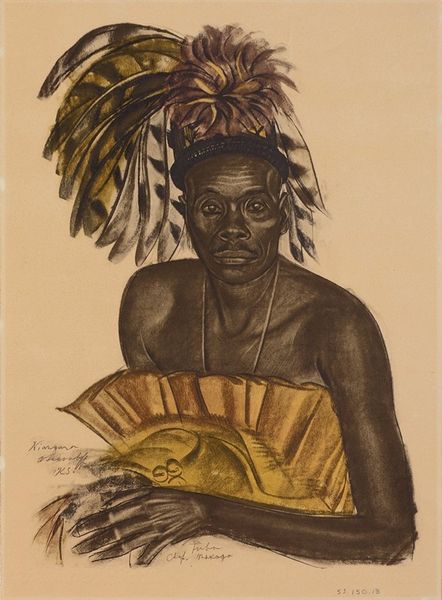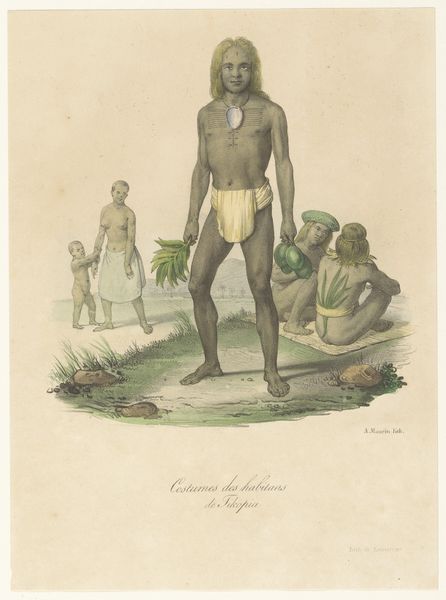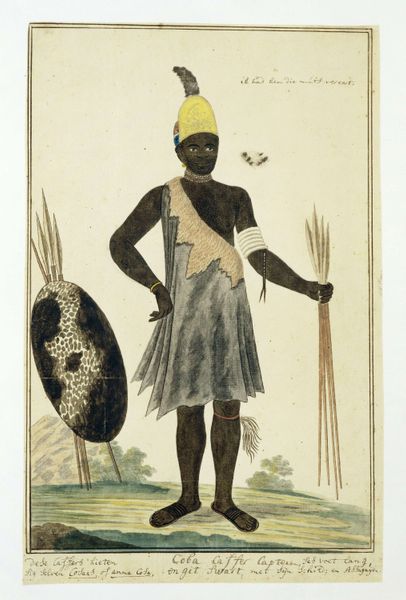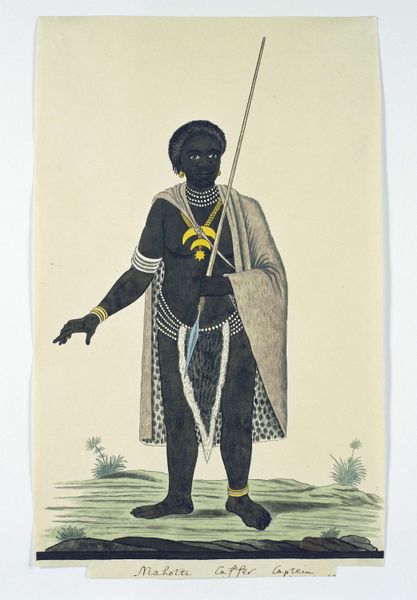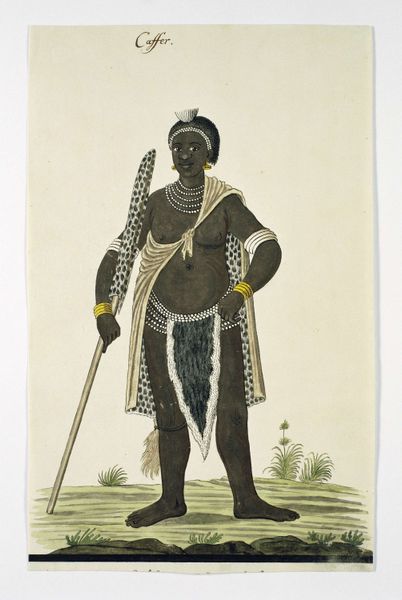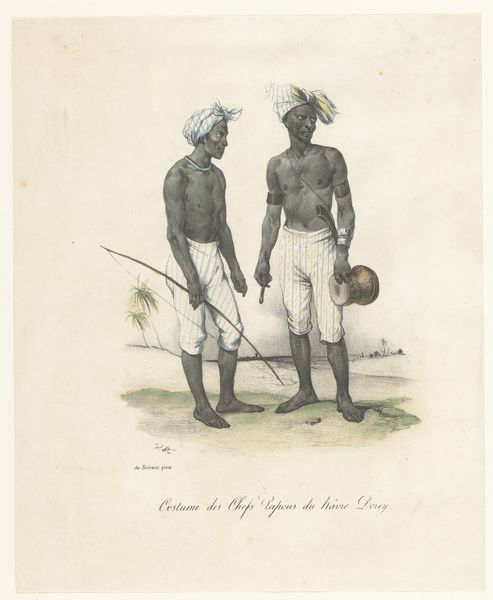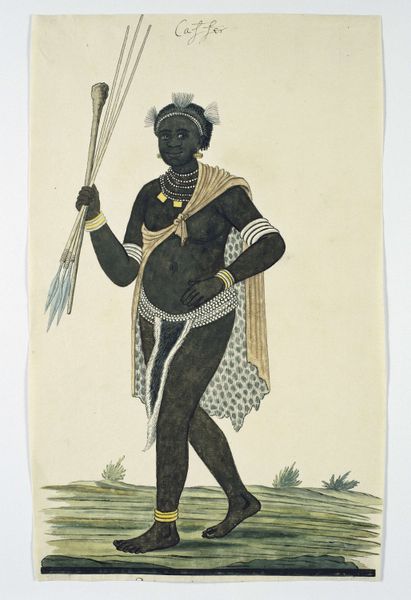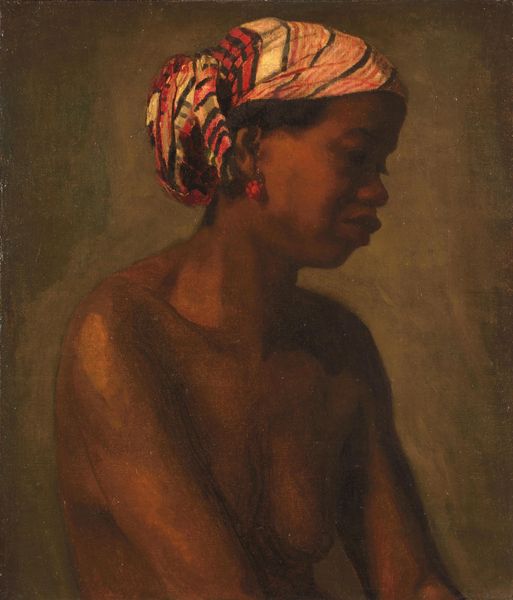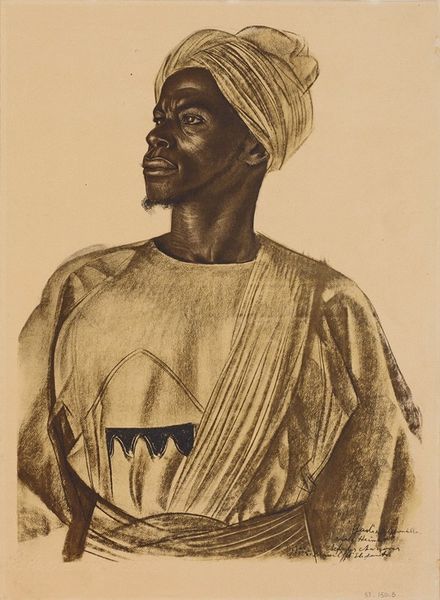
watercolor
#
portrait
#
dutch-golden-age
#
charcoal drawing
#
watercolor
#
coloured pencil
#
orientalism
#
watercolour illustration
#
genre-painting
#
watercolor
Dimensions: height 510 mm, width 360 mm
Copyright: Rijks Museum: Open Domain
Curator: What strikes you first about this piece, let's say, before even knowing it's a work by Willem Witsen, created sometime between 1870 and 1923, titled "Seated Indian Man with Water Pipe"? Editor: The first thing is its languid stillness. The man's pose, the muted palette...it exudes a sort of quietude, doesn’t it? Although a quietude inevitably shaped by its moment. How are we meant to view this figure, and by extension, the larger culture they signify? Curator: Witsen belonged to a circle of Dutch artists fascinated by the East, an Orientalist movement reflecting a desire to capture what they perceived as the exotic. That water pipe becomes a significant attribute, associating him with leisure and otherness. Consider how the red of the pipe sharply contrasts with the blues of the water jar—perhaps a statement about consumption and desire? Editor: Exactly, the very choice of watercolor and colored pencil hints at accessibility and dissemination—these materials lent themselves to creating copies, making it an easily reproduced image that fuels a kind of exotic fantasy for consumption back home. What type of labor extracted that vibrant color from the red pipe, I wonder? What are its trade routes? Curator: That tension is essential, between observation and objectification. The turban itself— what does that signify? The cultural symbols presented create a narrative, true, but how authentic is it? Or what emotional landscape does this create for European viewers? Editor: Perhaps the quietude is a false front for economic exploitation and trade relations. The material components all hold evidence of a world of making. Even something seemingly simple— the type of pigments available and affordable speaks volumes about production practices in Witsen's world. What specific craft processes, even hidden ones, contributed to this image's overall material form? Curator: A watercolor then becomes less an individual expression and more a record of complex transactions and interactions between cultures. The pose, and indeed, the pipe become markers for a culture, both specific, but also flattened and universalized at once. Editor: Agreed, approaching art through materials and social context really pushes us beyond a singular aesthetic interpretation. The cultural implications are complex and unsettling—and deeply embedded in something as seemingly innocuous as the color of that pipe or his headdress.
Comments
No comments
Be the first to comment and join the conversation on the ultimate creative platform.


